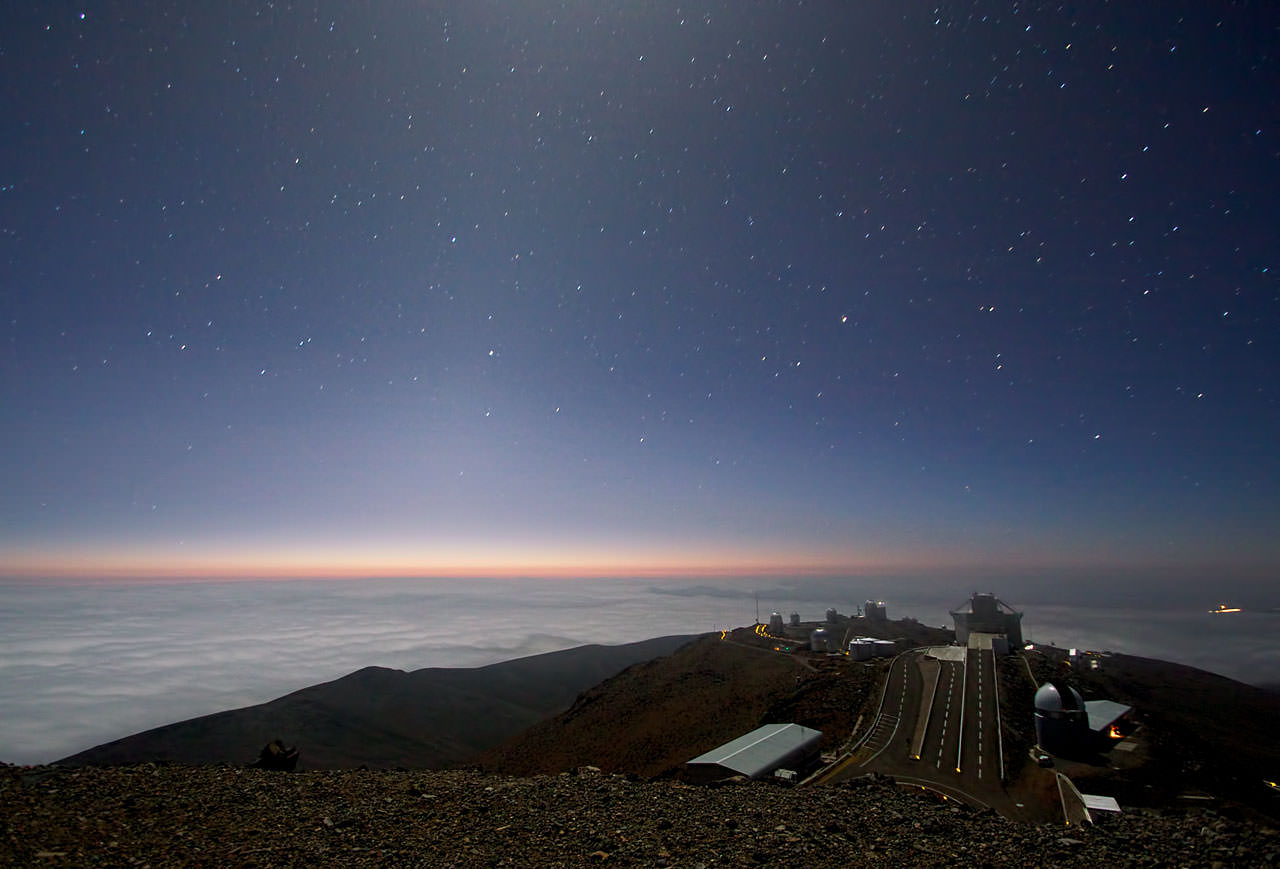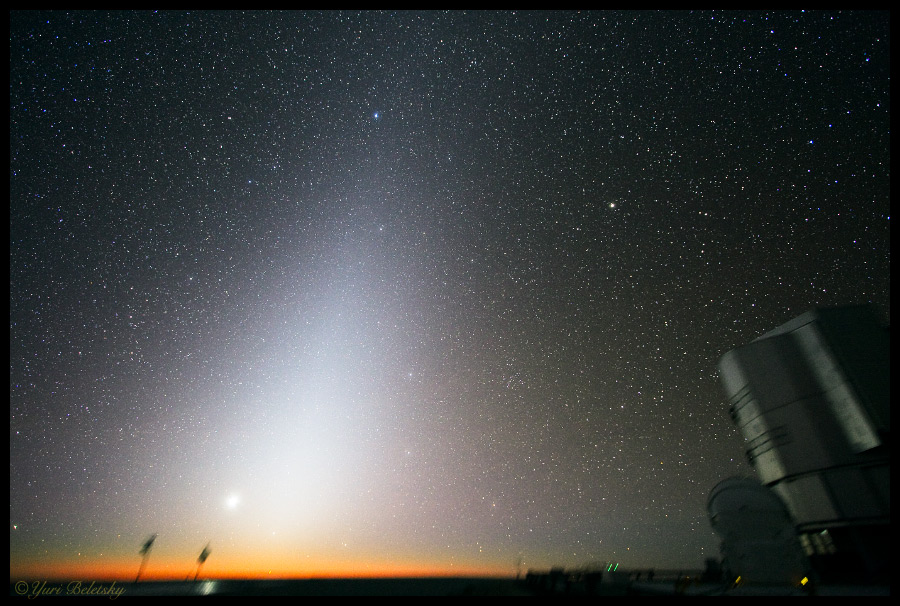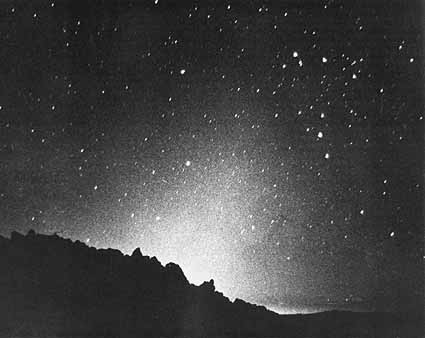Look to the West, just after the Sun has set, and you might see a dimly glowing triangle rising up from the horizon. This is the zodiacal light, where sunlight reflects off dust particles in the Solar System. If you live in the mid-northern latitudes, look for the zodiacal light in the evening in Autumn and in the morning in Spring.
Now that the Moon has departed from the early evening sky, this is a good time in the northern hemisphere to watch the western skyline for the evening zodiacal lights. If you live in an area where light and air pollution isn’t heavy, you stand a very good chance of seeing the interplanetary dust in the plane of our own solar system lit by the setting Sun, and that is the zodiacal light.
In the Spring in the northern hemisphere, the ecliptic plane extends upright from the western horizon. (If you live in the southern hemisphere, you need to watch the eastern horizon before dawn after New Moon.) When the Sun is just below the horizon, we can see a ghostly glowing pyramid. But, what is the zodiacal light?
Sunlight is back-scattered off small interplanetary dust particles, perhaps some of them from the very formation of our solar system itself. However, a lot of these tiny, millimeter sized splinters are from asteroids – or debris ejected from comets. Some of these particles are initially distributed in the trails that cause meteor showers, but whole lot of the dust eventually gathers along the ecliptic plane.
For the ultra-tiny particles, the radiation and solar wind disperses them beyond the confines of our solar system. The larger particles spiral inwards, pulled towards the Sun by gravity and form a flattened disc – a very low density cloud of dust, coincident with the plane of the solar system. Sunlight absorbed by the particles is re-emitted as invisible infrared radiation. This re-radiation causes the particles to spiral slowly into Sun, thus requiring continuous regeneration of the dust particles composing this cloud. The reflective particle disc makes its home in the same path the planets take around the Sun – the ecliptic. This imaginary path across the sky is where we here on Earth see the Sun and Moon, and it’s also home to the constellations of the zodiac!
Using the same celestial mechanics that give us times of solstice, equinox, lunar and solar eclipses, it only stands to reason there comes a time when the ecliptic plane appears nearly vertical from a certain vantage point. For the northern hemisphere it’s west in the spring and east in the fall. For the southern hemisphere it’s just the opposite! When the plane is near vertical, the thick air near the horizon doesn’t block out relatively bright reflecting dust and we see the zodiacal light!
Head out to an open horizon area where you’re away from man-made light pollution. As the skies grow dark, look for a faint pyramid of light spread out over a very large area of the sky. The zodiacal light won’t be as dramatic as photos show it. Near its base at the horizon, it can measure as broad as 40 degrees (two handspans), and stretch up as high as 60-80 degrees under good conditions. The spectrum of the zodiacal light is the same as the solar spectrum, reinforcing the deduction that it is merely sunlight reflected by dust in the plane of the planets. If you think you see a ghostly glow, you’re probably right!
If you’ve seen the zodiacal light, let us know!



